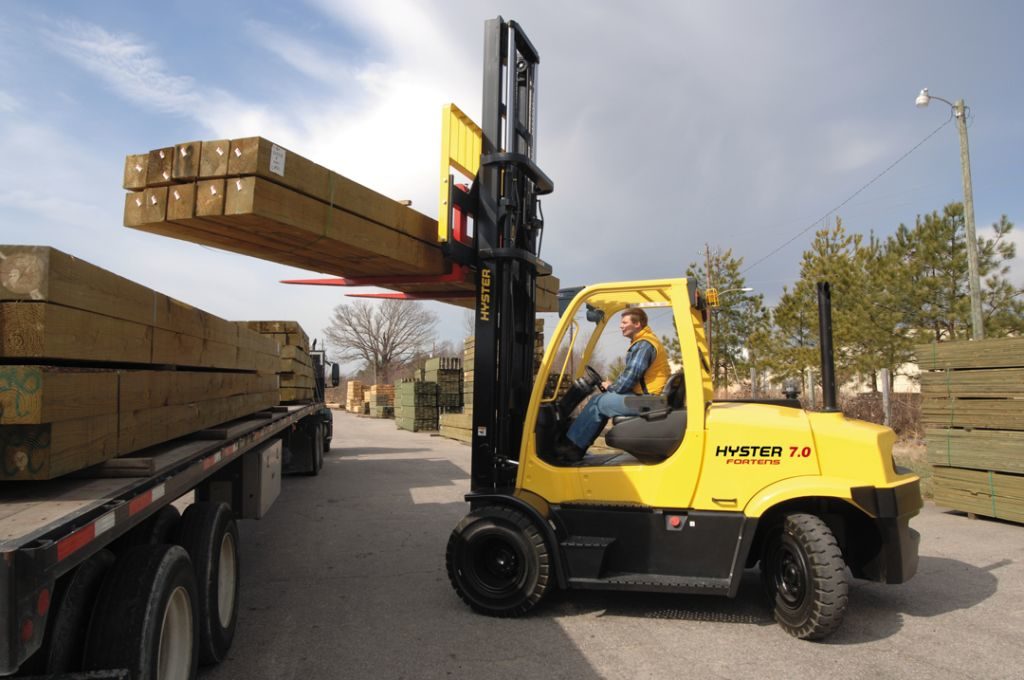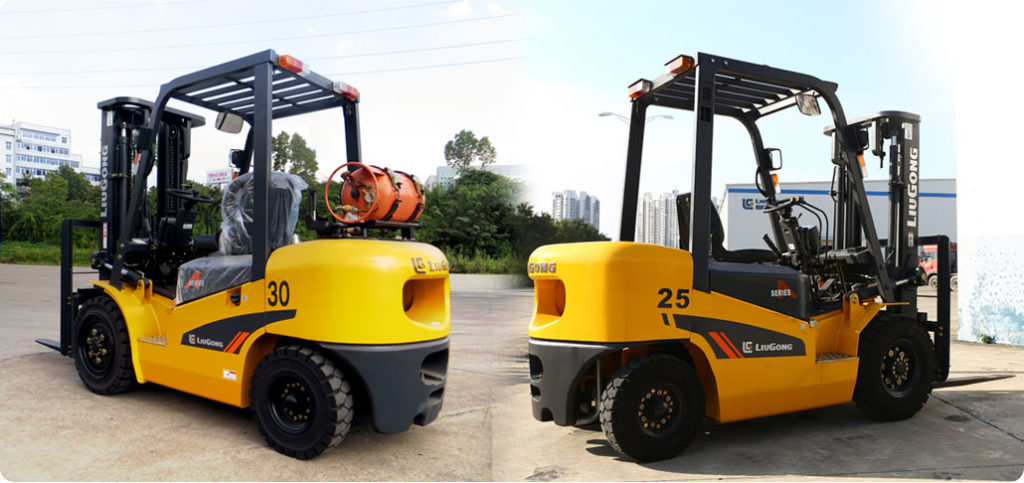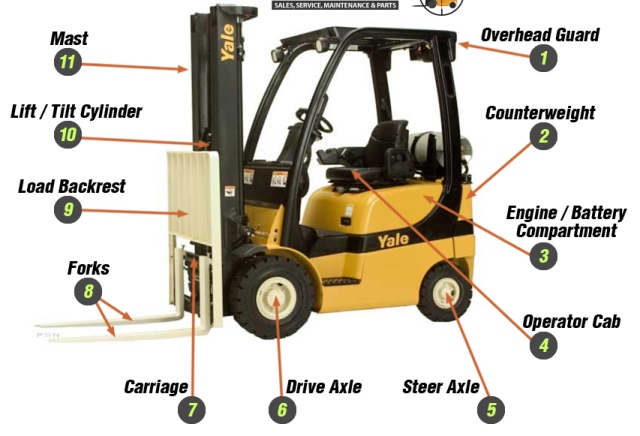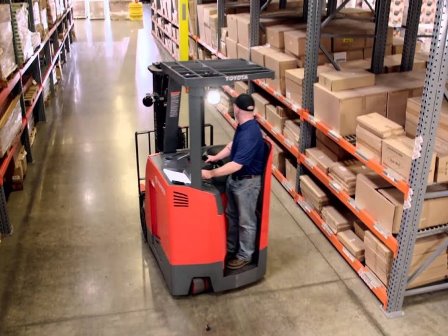Forklift accessories: A forklift is a motorized industrial truck that is used to lift and move materials over short distances. Forklifts are classified for loads with a specified maximum weight and a specific center of gravity. This information is found on an identification plate provided by the manufacturer, and the loads must not exceed these specifications.
In many jurisdictions, it is illegal to alter or remove the nameplate without the permission of the forklift manufacturer. An important aspect of the operation of the forklift is that it must have steering on the rear wheels.
While this increases maneuverability in tight cornering situations, it differs from the traditional driver experience with other wheeled vehicles.
While heading, since there is no action of the launcher, it is not necessary to apply the steering force to maintain a constant turning speed.

Forklift features
Another critical feature of the forklift is its instability. The forklift and the load must be considered a unit with a center of gravity that varies continuously with each movement of the load.
A forklift should never negotiate a turn at speed with a high load, where centrifugal and gravitational forces can combine to cause a disastrous rollover accident.
The forklift is designed with a load limit for the forks that decreases with a fork lift and load undercutting (ie, when a load does not come into contact with fork “L”). A load plate for the load reference is usually found on the forklift.

Forklift safety accessories
Forklifts are small vehicles with fork accessories that allow extremely heavy items to be loaded, unloaded, and transported throughout a facility by trained operators. Forklift attachments, such as heavy-duty forklift rams and booms allow users to move coils, carpet, and pipes. Forklift extensions provide added length during use. Platforms let personnel perform work at elevated heights.
Forklift safety regulations
Safety equipment: A forklift should not be used as a personnel lift without the installation of specific safety equipment, such as a “cherry picker” or “cage.”
Forklifts are a critical element of warehouses and distribution centers.
It is imperative that these structures are designed to accommodate their efficient and safe movement.
In the case of Drive-In / Drive-Thru Racking units, a forklift must travel within a storage compartment that has several depth pallet positions to place or retrieve a pallet.
Often, forklift drivers are guided into the bay through the guide rails on the floor and the platform is placed on arms or cantilevered rails.
These maneuvers require well-trained operators. Since each pallet requires the truck to enter the storage structure, the damage is more common than with other types of storage.
When designing an entry system, the dimensions of the forklift, including the overall width and the width of the mast, must be carefully considered.

Forklift capacity
The hydraulic system of the forklift is controlled by levers that directly manipulate the hydraulic valves or by electrically controlled actuators, using smaller “finger” levers for control.
The latter allows forklift designers more freedom in ergonomic design.
Load capacity
Forklifts are available in many variations and load capacities.
In a typical warehouse, most forklifts have a load capacity of between one and five tons.
The larger machines, with a lifting capacity of up to 50 tons, are used to lift heavier loads, including loaded shipping containers.
In addition to a control to raise and lower the forks (also known as blades or teeth), the operator can tilt the mast to compensate for the tendency of a load to tilt the blades towards the ground and risk slipping out of the forks.
The tilt also provides a limited capacity to operate on uneven terrain.
Skilled forklift operators compete annually on obstacles and timed challenges at regional forklift rodeos.
Forklift truck accessories
Forklift parts – A typical counterbalanced forklift contains the following components:
Truck frame: is the base of the machine to which the mast, axles, wheels, counterweight, top protection, and power supply are attached. The frame can have fuel and hydraulic fluid tanks built as part of the frame assembly.
Counterweight: it is a mass attached to the back of the forklift chassis. The purpose of the counterweight is to counteract the load that is being lifted. In an electric forklift, the large battery can serve as part of the counterweight.
Cabin: is the area that contains a seat for the operator along with the control pedals, the steering wheel, the levers, the switches and a dashboard that contains the operator’s readings. The area of the cabin can be outdoors or closed, but it is covered by the upper cage type protection set. When closed, the cab can also be equipped with a cabin heater for cold weather countries, along with a fan or air conditioner for warm climates.
Mast: it is the vertical assembly that does the job of raising and lowering the load. It is composed of interlocking rails that also provide lateral stability. The interlocking rails may have rollers or bushings as guides. The mast is hydraulically operated and is operated by one or more hydraulic cylinders directly or using cylinder chains. It can be mounted on the front axle or on the forklift frame. A variation of the ‘container mast’ allows the forks to rise a few meters without increasing the overall height of the forklift. This is useful when loading double load in a container or under a mezzanine.

Forklift driver accessories
Carriage: is the component on which the forks or other accessories are mounted. Mounts and moves up and down the rails of the mast by means of chains or by joining directly to the hydraulic cylinder. Like the mast, the car may have rollers or bushings to guide it in the mast rails intertwined.
Tires: solids for indoor use or tires for outdoor use
Accessories: can consist of a mechanism that is attached to the car, either permanently or temporarily, to assist in the proper coupling of the load. A variety of material handling accessories are available. Some accessories include side scrollers, sliding blade accessories, cardboard clamps, multi-purpose clamps, rotators, fork positioners, carpet poles, pole handlers, container handlers, and roller clamps.
Total source parts and accessories forklift
Superior protection: a metal roof supported by poles at each corner of the cab that helps protect the operator from any falling objects. On some forklifts, the top guard is an integrated part of the frame assembly.
Source of energy: it can consist of an internal combustion engine that can work with LP gas, CNG, gasoline or diesel fuel. Electric forklifts work with a battery or with fuel cells that provide power to electric motors. For warehouses and other indoor applications, electric forklifts have the advantage of not producing carbon monoxide.
Tilt cylinders: hydraulic cylinders that are mounted on the frame of the truck and on the mast. Tilt cylinders rotate the mast backward or forwards to help hook a load.
Load backrest: is an extension similar to a frame that is bolted or welded to the trolley to prevent the load from moving backward when the trolley is raised to the maximum height.

Push-pull forklift
Below is a list of the common forklift truck accessories:
The sliding-blade attachment (push-pull): is a hydraulic attachment that extends forward, attaches to a sliding blade and draws the sliding blade to the wide and thin metal forks for transport. The accessory will push the sliding blade and load the forks for placement.
Sizing devices: the sizing systems mounted on forklifts provide dimensions for the load to facilitate the use of the space of the truck trailer and to support the systems of warehouse automation. NTEP certified sizing devices are available to support commercial activities that are billed according to volume.
Side lifts
Side shifter: it is a hydraulic accessory that allows the operator to move the teeth (forks) and the backrest laterally. This allows for easier loading of a load without having to reposition the truck.
Rotator: to facilitate the handling of skids that may have been tilted excessively and other needs for handling special materials, some forklifts are equipped with an accessory that allows rotating the teeth. This type of accessory can also be used to unload containers for a quick download.
Forklift lifting accessories
Fork Positioner: is a hydraulic accessory that moves the tines (forks) together or separately. This eliminates the need for the operator to manually adjust the teeth for loads of different sizes.
Coupling of roller clamp and barrel: a mechanical or hydraulic attachment used to tighten the object to be moved. It is used to handle barrels, barrels or rolls of paper. This type of accessory can also have a rotation function. The rotation function would help an operator to insert a paper stored vertically into the horizontal entrance of a printing press, for example.
Pole accessories: In some places, such as carpet stores, a long metal pole is used instead of forks to lift carpet rolls. Similar devices, although much larger, are used to collect metal coils.
Forklift attachments
Cardboard and accessories of multi-purpose clamp: they are hydraulic accessories that allow the operator to open and close a load, pressing it to lift it. Products such as cartons, boxes, and bales can be moved with this type of accessory. With these accessories in use, the forklift is sometimes referred to as a clamping truck.
Attachment for handling the drum: it is a mechanical accessory that slides on the teeth (forks). Generally, it has a jaw with spring that holds the upper edge of the edge of a drum for transport. Another type is gripped around the drum in a similar way to the accessories of the roll or barrel.
Simple double forks: they are forks that, in the closed position, allow the movement of a single platform or platform, but when they separate, they become a set of double forks that allow two platforms to be transported from side to side. The fork control may have to replace the side shift lever on some forklifts.
Basket for men: a lifting platform that slides over the tines (forks) and is designed to hoist workers. The man’s basket has handrails to prevent the person from falling and supports to hold a safety harness. In addition, a strap or chain is used to attach the man’s basket to the forklift truck.
Telescopic forks: these are hydraulic accessories that allow the operator to operate the warehouse design for “double-depth stacking”, which means that two pallet shelves are placed one behind the other without any aisles between them.
Forklift accessories
Scales: Truck-mounted scales allow operators to efficiently weigh the pallets they handle without interrupting their workflow when traveling to a platform. There are scales available that provide legal weightings for trade for operations involving billing by weight. They can be easily adapted to the truck hanging from the truck in the same way that the forks hang from the truck.
Snowplow: it is a mechanical accessory that allows the forklift operator to move snow easily and quickly. The snow plow can often also be used at other times of the year as an accessory to clean work places.
Jumps: is a mechanical accessory that is simply mounted on your forklift truck to allow safe and quick disposal of waste to the appropriate waste or waste compactor. There are two types of breaks: the type of advance and the lower type.
Any accessory on a forklift will reduce its rated load capacity, which is calculated with a standard fork and fork. The actual load capacity can be significantly lower.
One is an inching pedal on the far left to disengage the transmission in order to rev the engine and quickly lift your load as well as apply the brakes so you don’t move. The actual brake pedal is in the middle and works only as a brake. Some have one pedal which when pressed allows both inching and braking at the same time accomplishing the same results as two pedals.
The most read

Robotic Forklift
Automated Guided Vehicles and robotic forklifts are increasingly becoming a mainstay in manufacturing facilities and distribution center operations.

Stand-up Forklift
Stand-up forklifts are designed for applications where the operator must get on and off the lift truck frequently.
